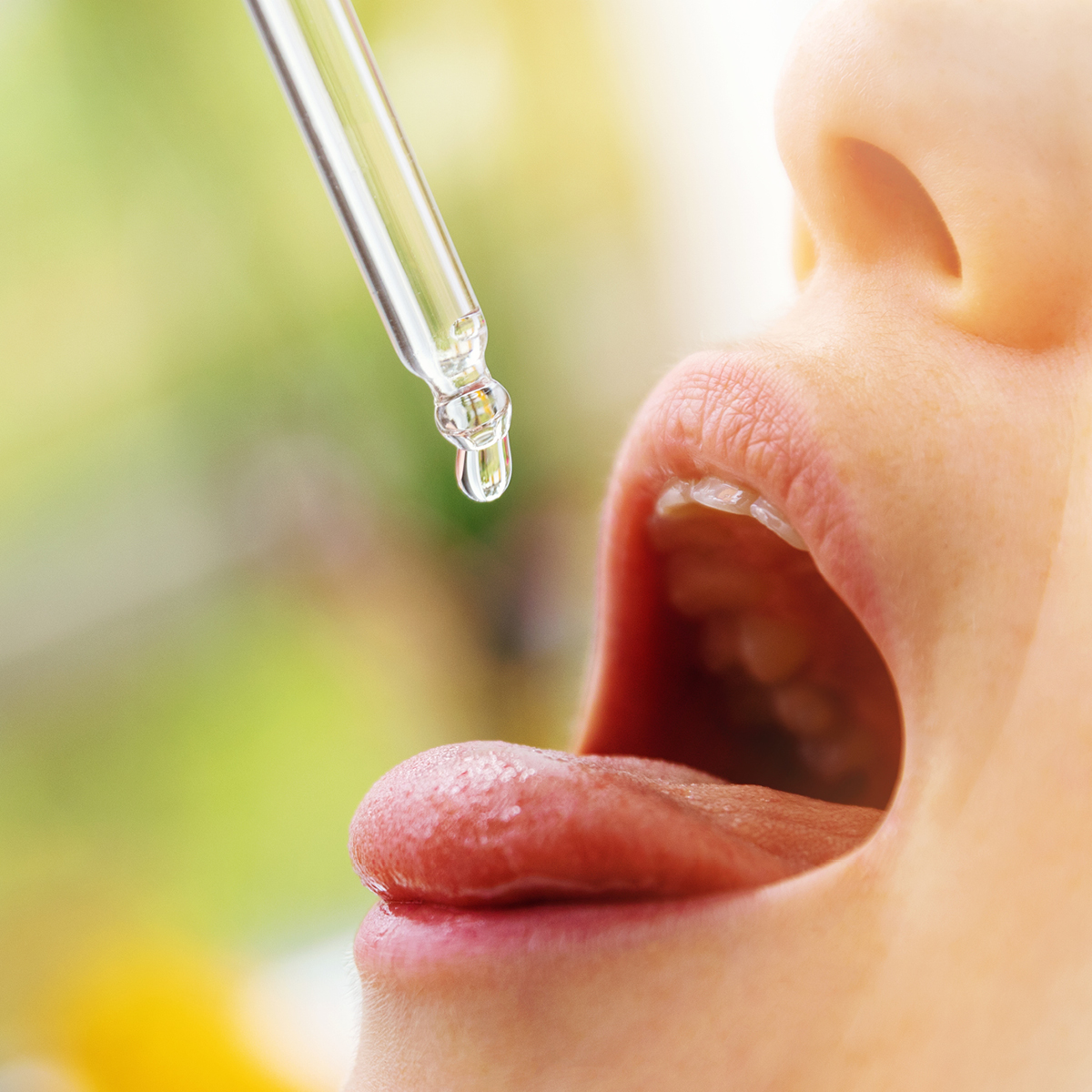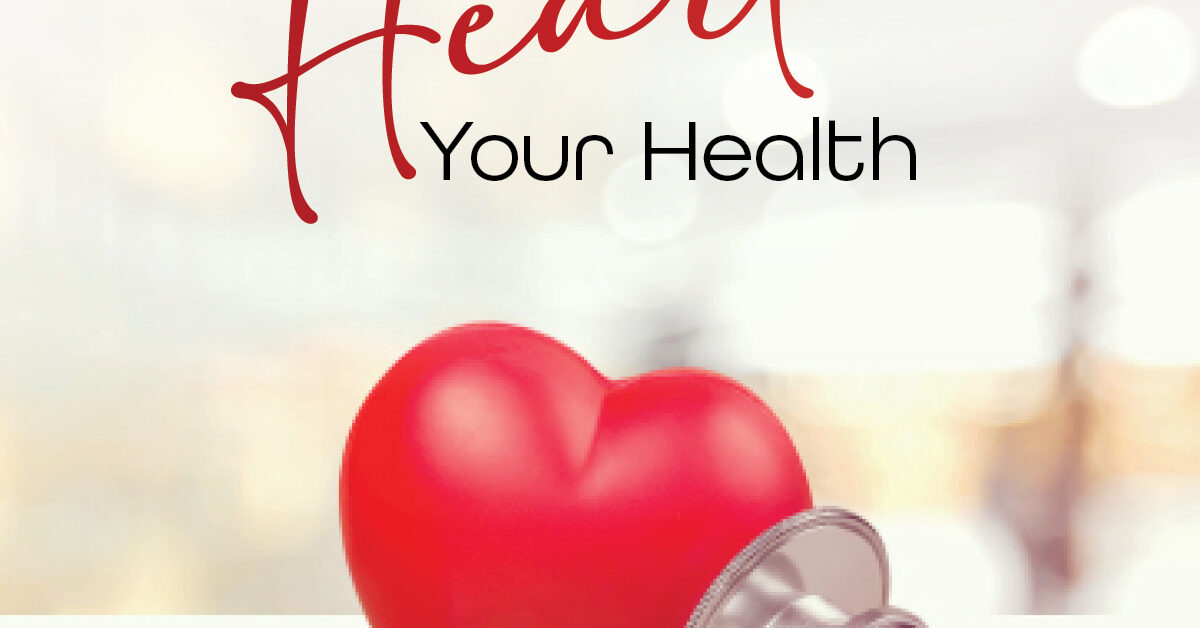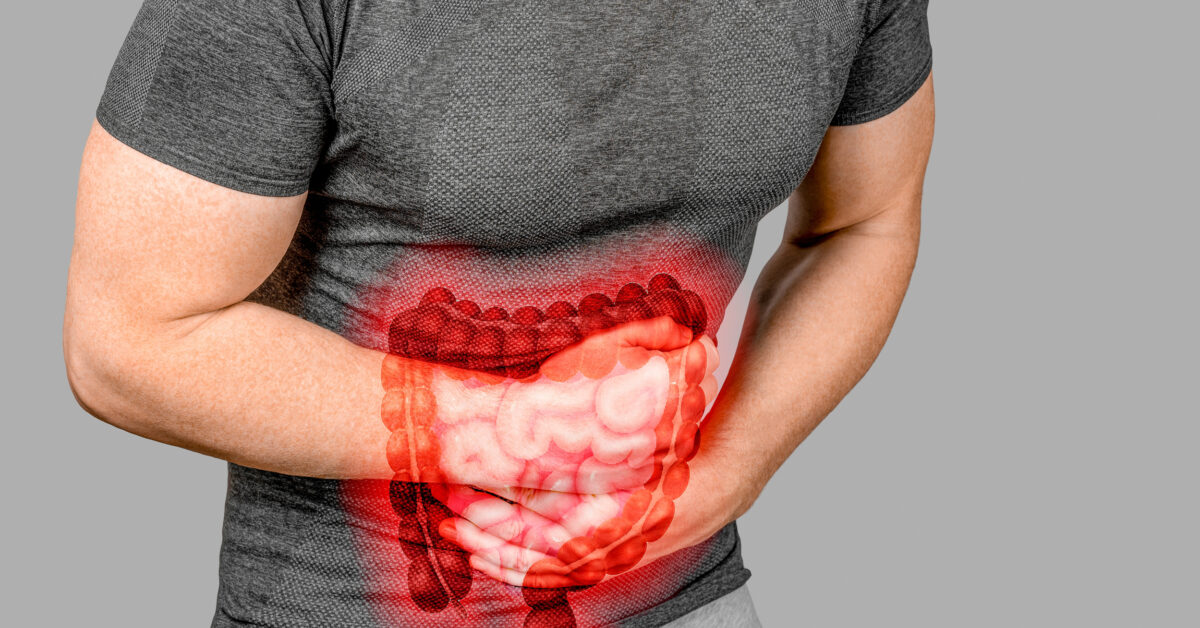Solutions for life: The Gift of Goodbye
January 2023
ENT & Allergic Clinic Now Offering Allergy Drops
February 2023February is American Heart Month, and we’re not talking about Valentine’s Day. It’s about your heart health! According to the Centers for Disease Control, heart disease is the leading cause of death for men, women, and people of most racial and ethnic groups in the United States. About 697,000 people in the United States died from heart disease in 2020—that’s one in every five deaths. Understanding the risk factors for heart disease and how to live a heart-healthy lifestyle are a part of protecting your health and practicing self-care. In this annual special section, we offer information on knowing the risk factors and how to keep your heart healthy. You’ll also find a fascinating story on one local family’s journey with heart illness and how they were aided by Local Heart Foundation.
Eating for a Healthier Heart
by Christine Fisher
The foods we eat provide fuel for our bodies. If we continuously eat foods high in sugar and fat, it should be no surprise that the body could begin to deteriorate over time. On the other hand, an eating plan filled with vitamin-rich fruits and vegetables will help the body stay healthy and vital.
“Heart-healthy eating is an important way to lower the risk of heart disease and stroke,” says Cynthia Chantlin, CDCES, registered dietitian with West Calcasieu Cameron Hospital. “It’s one of the most important ways to benefit the health of your heart.” Since heart disease accounts for nearly one-third of all deaths worldwide, a heart-healthy diet is an important factor in maintaining good heart health.
Certain foods can influence blood pressure, cholesterol, inflammation and triglycerides, all of which are risk factors for heart disease. Chantlin encourages a diet filled with these heart-healthy foods.
Berries such as blueberries, strawberries and blackberries are some of the most powerful, disease-fighting foods. They are filled with fiber and vitamin C.
Salmon and tuna are packed with heart-loving omega-3 fatty acids, which help to lower blood pressure and total cholesterol.
Oats are packed with fiber, which can lower cholesterol and protect the heart. One of the best ways to eat these are simply in the traditional method of warm oatmeal; add a handful of berries for even more heart-health benefits.
Beans and lentils contain a variety of heart-healthy nutrients including fiber and B-vitamins.
Tomatoes are filled with lycopene, an antioxidant that has been associated with lower levels of bad cholesterol (LDL) and a lower heart attack risk. “Generally, the more colorful the food, the higher its nutritional content,” explains Chantlin. “The most nutritious plate is filled with colorful foods.”
In addition to eating vitamin-packed foods, it’s also important to limit or reduce salt. Eating too much salt can lead to high blood pressure, one of the risk factors for heart disease. The American Heart Association recommends no more than 2,300 milligrams of sodium a day, or about one teaspoon of salt.
“Many canned and frozen prepared foods are high in sodium,” Chantlin says. “Which is why eating fresh foods can help someone reduce their sodium intake. If convenience is a factor, look for options that say ‘no added salt’ or ‘reduced sodium’. ”Choosing high-quality, nutritious foods can provide a boost toward a healthier heart.”
Keep Moving: The benefits of exercise on heart health
by Christine Fisher
Many of us may correlate exercise with losing weight. While that is one of the benefits of increased movement, we may forget the value workouts have on the heart.
The heart, like every muscle, gets stronger and healthier with exercise. “Physical activity triggers changes in blood vessels, muscles, metabolism and brain,” explains Suzy Trahan, LDN, RD, ACSM certified exercise physiologist, ACE certified personal trainer, director of Dynamic Dimensions Fitness Centers of West Calcasieu Cameron Hospital. “All of these promote better heart health.
Trahan says, over time, exercise increases the size of the heart’s chambers and conditions the heart. As a result, the heart relaxes more easily and pumps more efficiently because it requires less effort to send blood throughout the body. “Exercise boosts the amount of blood circulating through the body by up to 25%, which encourages blood vessels to expand slightly and become more flexible. Exercise also promotes the production of nitric oxide, a molecule that relaxes and widens blood vessels.”
Aerobic exercise and resistance training are beneficial for boosting heart health. Flexibility is also key; although it doesn’t directly benefit heart health, it provides a strong foundation for being able to perform aerobic and strength exercise more effectively.
Aerobic exercise improves circulation, resulting in lowered blood pressure and heart rate. It also strengthens the pumping efficiency of the heart. Types of aerobic exercise include running, swimming, bicycling, playing tennis and brisk walking. “Ideally, it’s beneficial to get at least 30 minutes a day, at least five days a week of aerobic exercise,” Trahan says.
Strength training helps reduce overall body fat, similarly to aerobic exercise; but it also helps create leaner muscle mass and improved circulation, resulting in less pressure on arteries, reducing the risk of a heart attack or stroke.
Studies show that a combination of aerobic exercise and strength training can help raise HDL (good) cholesterol and lower LDL (bad) cholesterol. “Resistant training can be done with either weight machines to work arms and legs, with free weights or even with your own body weight as with yoga, tai chi or Pilates movements,” she says. “Aim to do these two to three times a week, letting your muscles recover for a day in between.”
Movements to improve flexibility are powerful to benefit musculoskeletal health. They help the body stay flexible and may reduce joint pain. “If you have a good musculoskeletal foundation, it enables you to do the exercises that help your heart, such as aerobic and strength training,” adds Trahan.
“In addition, being flexible improves balance, which also helps maintain stability and prevent falls.” She advises incorporating flexibility movements into workouts, before and after other exercises.
It’s normal to feel mildly sore for a day or two after a workout, especially for beginners. As the body adjusts, the soreness will fade. It’s beneficial to change the types of exercises you do after a few weeks to work different muscles, and it adds variety for those who don’t like to do the same things all the time.
Starting an exercise program can be as simple as going for a walk for a few minutes each day, gradually increasing the time and intensity, and then incorporating aerobic, strength training and flexibility movements over time. As always, check with your doctor if you have any concerns.
For more information, visit www.dynamicfitnesscenters.com.
Cardiovascular Health: IT’S MORE THAN JUST YOUR HEART
When you think of your cardiovascular system, you most likely think of your heart and your blood vessels. However, your cardiovascular system extends to the arms and legs as well, and includes veins and arteries.
Cardiovascular conditions in the legs are usually identified by leg pain, cramping, or discoloration. In the case of peripheral artery disease, also known as PAD, plaque buildup narrows arteries and reduces blood flow to the legs. Like clogged arteries in the heart, clogged arteries in the legs puts you at risk for having a heart attack or stroke. Other symptoms include numbness, coldness, sores that won’t heal, discoloration, hair loss, shiny skin or weak pulse. If you have heart disease, you have a one in three chance of developing PAD. Other risk factors include: age 50+, smoking, diabetes, high blood pressure or cholesterol, and family history of vascular disease. A simple, painless ultrasound called an ankle brachial index (ABI) can diagnose PAD. Once detected, treatment can reduce symptoms, improve mobility, enhance quality of life, and help prevent heart attack, stroke, and amputation.
Like in the arteries, damaged veins in the legs can also cause vascular leg complications. Venous disease is a condition when the veins in the legs do not properly return blood back to the heart. Damaged or weakened veins cause blood to flow backwards, causing blood to pool in the legs. This leads to visible, painful or swollen veins, including varicose or spider veins. Varicose veins are enlarged, bulging or twisting veins, whereas spider veins are smaller and are seen as blue or red lines closer to the skin’s surface.
In addition to visible veins, other symptoms of venous disease include:
- Swelling or heaviness in legs
- Leg pain – Aching, cramping, burning or throbbing, especially after prolonged periods of sitting
- Discoloration of skin
- Protrusion of enlarged veins with a cord or rope-like appearance
- Dry or weeping eczema
- Leg ulcers
- Restless legs
- Itching
Diagnosing venous disease relies on a combination of symptoms, physical examination, and diagnostic tests. To confirm the presence of venous disease, a physician will most commonly use tests such as ultrasound, computed tomography or magnetic resonance imaging to visualize how blood travels through the veins. A blood test or venography x-ray can also be done to find potential blood clots.
Venous disease can be treated with lifestyle modifications as well as medication. Compression stockings are most commonly used to help relieve symptoms, improve blood flow, and reduce swelling. However to treat the root of the problem, further medical treatment may be needed to reduce symptoms and improve appearance.
Cardiovascular Institute of the South offers comprehensive treatment for venous disease with the latest minimally-invasive procedures, all performed conveniently in a clinic setting. Without treatment, venous disease can worsen due to the pressure of the backflow of blood in the legs. It can cause tissue inflammation, tissue damage or blood clots, leading to ulcers and infections, and ultimately making the condition painful and debilitating. That is why it is important to receive proper diagnosis and treatment from a vein specialist.
If you experience symptoms of vascular disease in the legs, visit a cardiologist to determine the cause of the problem. Dr. Riaz Rahman, interventional cardiologist, treats these conditions at CIS in Jennings. Schedule an appointment at CIS in Jennings by calling 337-388-6200 or visiting www.cardio.com.
Harness the Power of You for Heart Health
by Kristy Como Armand
Knowledge is power, and the more you learn about your health, including your heart health, the more you can be proactive about managing your health. A healthy heart is central to overall good health. Embracing a healthy lifestyle at any age can prevent heart disease and lower your risk for a cardiovascular-related health condition.
According to Dr. Prasanna Sugathan, board certified cardiologist with Imperial Health, when people think about their heart health, they often focus on things they need to stop doing instead of things they can choose to start doing to improve their cardiovascular health. “I like to tell my patients about the power they have to help their body do what it’s designed to do,” says Dr. Sugathan. “We have miraculous bodies with intricate metabolic and physiologic capabilities that don’t need to think about it to function. Because this occurs without direct supervision, so to speak, often we take it for granted. In a stress-filled lifestyle, we tend to overlook that what we consume as food, what we are exposed to in our environment, how much we move our bodies, can and does affect our magnificent metabolic machinery.
Making choices to help one’s body perform at its best is something we can all do to improve our overall health as well as heart health. It’s up to each of us to seize that power.” Dr. Sugathan adds that you are never too old or too young to begin taking care of your heart. “You are in direct control over many things that can influence your heart health. It’s up to you to choose how seriously you take this responsibility.”
Some people find it easy to adopt a healthy lifestyle, while others focus on what they should do only after being diagnosed with health problems such as high blood pressure, high cholesterol, diabetes or even a heart attack or stroke. “Whatever your inspiration, know that the benefits of a heart-healthy lifestyle are worth the effort, as it promotes good overall health. You’ll help prevent high blood pressure, diabetes and other chronic diseases. You can also modify your risk for certain cancers with some lifestyle changes.”
Not sure where to begin? Dr. Sugathan says to choose just one healthy habit to start. As you gain control, add another, then another. “Soon, you’ll feel empowered instead of overwhelmed. If you need guidance, ask your doctor. We are here to help you; but remember, YOU are the one with the POWER to do something.”
Dr. Sugathan wholeheartedly recommends a heart-healthy whole foods lifestyle. Consume the best quality, least processed food items and eliminate most pre-made foods. “Try this plan for a month and see how you feel,” she says. “Focus on eating more green leafy vegetables, different colors of vegetables, berries and fruits, whole grains, legumes, seeds, nuts, and the various mushroom varieties that are readily available locally. Seek out the best quality, least processed meat, poultry, fish, eggs, and dairy, consumed in moderation of course. Avoid hormones, antibiotics, pesticides, and other additives through food sources. Label reading helps you make smarter choices. Look over the ingredients list for the few processed items you may need to buy. Look for foods with little added sugars. And eat your calories, don’t drink them! Sodas, juices, creamers, etc. contain large quantities of sugar, while the body requirement for daily sugar intake is zero. High sugar and carbohydrate intake increases insulin levels in the body, which can lead to overeating and weight gain. Replace the unhealthy drinks with filtered water. If you make these dietary changes for a month, you’ll feel better and be more encouraged to maintain a healthier lifestyle.”
Dr. Sugathan’s other suggestions for changes that complement healthier eating include:
Be more active. You don’t need to join a gym or buy fancy exercise equipment; just move more. Take the stairs, take a walk, dance, work in your yard. Consider creating a buddy system to help motivate each other. Aim for 30 minutes of walking five to six days a week.
Know and understand your risk factors. This empowers you to take proactive steps toward better health. Work with your healthcare team to understand what your blood pressure is, your cholesterol and blood glucose levels, and treatment goals. If you have a family history that increases your risk, that guides the decisions regarding your treatment.
Manage stress to help reduce your risk of heart attack, stroke and high blood pressure. Chronic stress elevates stress hormone levels which can have lasting effects on the body. Recognize the stress and manage ways to cope with it, such as meditation, breathing exercises, walking in nature. Ask for help if you’re feeling overwhelmed.
Restorative sleep is increasingly being recognized as being important. Sleep habits may differ. However, restorative sleep is necessary for all of us.
While YOU are in charge of your own health, Dr. Sugathan adds that it is critically important that if you’re being treated for hypertension, cholesterol, diabetes, and other chronic conditions with medications, any sweeping changes should be done with the oversight of your medical care provider. The healthy changes you make may lead to lower blood pressure and blood glucose levels and other changes requiring a decrease in medication doses.
“The first step in treating heart disease is trying to prevent it altogether,” stresses Dr. Sugathan. “I hope you choose to wield the power you have over your own healthy future.”
To schedule an appointment with Dr. Sugathan in Lake Charles, call 337-312-8281.
A Community Forever Heart Connected: Local Heart Foundation Benefits Families Suffering from Heart Diseases
by Angie Kay Dilmore
In December 2015, when Stacie Adams was 17 weeks pregnant with her second child, she and her fiancé, Jeremy Bordelon, discovered via sonogram that the baby had multiple, life-threatening heart defects. She was diagnosed with Double Inlet Left Ventricle, Hypoplastic Right Ventricle, Transposition of the Great Arteries, Hypoplastic Aortic Arch, Coarctation of the Aorta, and Ventricular Septal Defect. Basically, the baby would be born with only half a heart. The remainder of the pregnancy was filled with worry and concern for the unknowns, all while continuing to care for son Maddox, age two at the time. Stacie’s niece hosted a gender reveal party. “We opened a box and found a pink balloon that said, ‘It’s a Girl!’ As I held our son, I stood there and cried, realizing this was all surreal . . . but trusting God.”
At 37 weeks into her pregnancy, the family moved to Houston to be close to Texas Children’s Hospital, where Stacie would deliver. The baby would be in the Cardiovascular Intensive Care Unit (CVICU) and need her first surgery within the first week of life. On May 3, 2016, at 39 weeks, Addison was born. “We were told there was a possibility that we would not be able to hold Addison after she was born. Thankfully, we were able to hold her but for only a few minutes. She was put in the incubator and walked over to the CVICU. Jeremy accompanied her, and on their way, they passed another dad who gently tapped Jeremy on the back for encouragement. Later, we realized this was the moment we joined a family that we never knew existed.”
Addison had the first of her three surgeries on May 9 and remained in the hospital for six more weeks. The family continued to live in Houston for her care and until after her second surgery that September. “Finally in mid-October, we were allowed to go back to Lake Charles for her to continue to grow until she reached the age of three to five to have the third heart surgery. And we did just that. Life was different but we were getting used to our new normal.”
Fast forward three years. Not long prior to Addison’s third surgery, the couple discovered Local Heart Foundation via one of Jeremy’s relatives. Stacie contacted Susannah Todd, then-director of the foundation, and she quickly found ways to assist the family. “Within a couple days, Susannah had an apartment for us, gift cards for meals and gift cards for gas,” Stacie recalls. “We were blown away by Local Heart Foundation’s assistance for our unplanned financial burden. Because of the foundation, both Jeremy and I were able to stay with Addison in Houston for her entire hospital stay after her third surgery in October 2019. After Addison’s surgery, Susannah and Tammy Andreas, co-founder of Local Heart Foundation, visited us in the hospital, bringing Addison treats and stuffed animals. Not only did the foundation assist with financial burdens, they also showed compassion and prayed for Addison’s health and strength for our family.”
In 2020, Stacie and Jeremy shared their story at Local Heart Foundation’s annual fundraising event. Stacie says they were honored to speak about Addison’s unique heart disorder, the challenges families face when needing to travel out of town for cardiac care, and how Local Heart Foundation assists these families.
“We felt blessed to have been a part of such a fun and inspiring event,” she adds.Today, Addison is thriving and has started kindergarten. “Her team of doctors say she is doing amazingly well,” Stacie says. “Addison will continue to grow and spread her joyful spirit.”
But the story doesn’t end there. Stacie has been working on a psychology degree from McNeese State University, in hopes of helping other families. Last October, Tammy called her and told her that Susannah was resigning from Local Heart Foundation’s director’s position to care for her new baby and offered the position to Stacie.
“I was stunned,” Stacie says. Tammy offered me my dream job! I am excited to begin this journey with such a wonderful foundation and am even more excited to do it with Tim and Tammy Andreas. Being on the frontline, helping other heart families with similar diagnoses, both financially and emotionally, is the most rewarding and humbling experience. God prepared me for this journey to assist other families through my own daughter’s heart.”
Local Heart Foundation was formed in 2017 by Tim and Tammy Andreas to assist families of children and adults with heart disease. Visit Local Heart Foundation on Facebook and Instagram to keep up with local heart patients, event announcements, and more. Visit their website at www.localheartfoundation.org. Local Heart Foundation currently only accepts Applications for Assistance from cardiologist’s offices. If you are receiving treatment for heart disease and need assistance, please contact your cardiologist.






